Blackbushe, 5. října 1945

Remains of the burnt out fuselage of Liberator GR VI, PP-N, KG867
Ohořelé trosky trupu letounu Liberator GR VI, PP-N, KG867
In World War 2, whilst serving in the RAF, 512 Czechoslovak airmen lost their lives. Of these approximately 40% were killed in flying or training accidents.
Během 2. světové války přišlo o život během služby v královském letectvu RAF celkem 512 československých letců. Z nich přibližně 40% zahynulo při leteckých nehodách nebo při leteckém výcviku.
The most tragic of these accidents happened on 5 October 1945. Wartime hostilities had been over for some months and on board the Liberator aircraft were Czechoslovak women and children being repatriated to their recently liberated homeland.
Nejtragičtější z těchto nehod se stala dne 5. října 1945. Časy válečných útrap skončily před pár měsíci a na palubě letadla Liberator byly zejména československé ženy a děti, které se chystaly k návratu do své nedávno osvobozené vlasti.
In the immediate post-war period the Liberator aircraft of 311 Sqn, since August based at Ruzyně airport at Prague, were now used for the repatriation of Czechoslovak citizens and stores from England back to Prague. To facilitate this new role, the bomb bay of the aircraft having temporary wooden flooring and makeshift wooden benches for passenger seating.
Krátce po skončení války byly letouny Liberator od 311. perutě od srpna převedeny na pražské letiště Ruzyně a byly používány pro návrat československých občanů a nákladu z Anglie zpět do Prahy. Pro tyto účely byl v letadle oddíl pro uložení bomb překryt dřevěnou podlahou s provizorními dřevěnými lavicemi pro cestující.
Liberator GR VI, PP-N, KG867 had been originally scheduled for take-off on 4 October, from Blackbushe airfield, but after three attempts to take-off were aborted due to an engine problem the pilot, P/O Jaroslav Kudláček, returned the aircraft to the hanger so that the problem could be rectified. Following an inspection, mechanics commenced the required remedial work and the flight was re-scheduled for the following day. The passengers were put into temporary overnight accommodation on the airfield.
Liberator GR VI, PP-N, KG867 byl původně připraven ke vzletu 4. října z letiště Blackbushe, avšak po třech nezdařených pokusech o vzlet byl let zrušen kvůli problému s motorem. Pilot, P/O Jaroslav Kudláček, se vrátil s letadlem k hangáru, aby se porucha mohla odstranit. Po prohlídce začali mechanici problém odstraňovat a let byl naplánován na příští den. Cestující byli poté přechodně ubytováni přímo na letišti.
The following morning the original passenger manifest had been changed. Two of the original passengers, W/O Pavel Svoboda, a Air Gunner and LACW 1st class Edita Sedláková 19, a WAAF ground Wireless Operator, both still serving in 311 Sqn, were told that they were no longer on the passenger manifest and their seats had been allocated to two other passengers.
Následujícího dne byl původní seznam cestujících pozměněn. Dva z původních pasažérů, W. O. Pavel Svoboda, střelec a LACW 1. třídy Edita Sedláková 19, WAAF pozemní radiotelegrafistka, oba stále sloužící u 311. peruti, byli ze seznamu vyjmuti a jejich místa byla přidělena jiným dvěma pasažérům.

Typical Liberator VI, with Czech markings, as for used for transporting personnel
Liberator VI, s českými imatrikulačními znaky, určený pro přepravu osob
Liberator KG867 took-off from Blackbushe airfield, Hampshire, UK, at 12:43 hrs in good weather conditions. The flight was authorised for the repatriation of Czech nationals to Prague. On board were 23 people. They included the crew of: pilot – P/O Jaroslav Kudláček, co-pilot: W/O Antonín Brož, navigator: P/O Karel Rybníček, Wireless Operator: F/O Bohumil Vaverka, Flight Engineer: F/Sgt Zdeněk Sedlák. On the passenger manifest were 17 passengers including 9 women and 5 children, an authorised total of 22 people. It was later found that a stowaway had also been on board.
Liberator KG867 odstartoval z letiště Blackbushe, Hampshire, UK, ve 12:43 hod. za dobrých povětrnostních podmínek. Let byl povolen pro návrat českých státních příslušníků do Prahy. Na palubě bylo 23 osob. Posádku tvořili: pilot – P/O Jaroslav Kudláček, druhý pilot: W/O Antonín Brož, navigátor: P/O Karel Rybníček, radiotelegrafista: F/O Bohumil Vaverka, letový inženýr: F/Sgt Zdeněk Sedlák. Na seznamu cestujících bylo 17 osob, z toho 9 žen a 5 dětí, celkem 22 osob. Později bylo zjištěno, že na palubě byl také jeden černý pasažér.
The pilot, 25 years old P/O Jaroslav Kudláček, had 1,421 flying hours to his credit. His experience as a pilot on four-engined aircraft was 512 hours day and night, most of which was on Liberators. During his attachment with Transport Command, his experience was 44 hours. This was due to be his last flight as a pilot. He had just returned from a very brief visit to his wife and newborn son at Wolverhampton Hospital, and the following day would be the fourth birthday of their 1st son.
Pilot, P/O Jaroslav Kudláček (25), měl na svém účtu 1421 letových hodin. Jeho zkušenost s řízením čtyřmotorového letadla byla 512 hodin z denních i nočních letů, z nichž většina byla na Liberatorech. Během svého působení u společnosti Transport Command nalétal dalších 44 hodin. Měl to být jeho poslední let ve funkci pilota. Právě se vrátil z velmi krátké návštěvy své ženy a novorozeného syna v nemocnici v Wolverhamptonu, a následující den by oslavili 4. narozeniny jejich prvního syna.
About 3 minutes after take-off, at an altitude of about 500 feet, witnesses on the ground, saw that the aircraft was on fire which was intense and appeared to be located around the inner port engine. The fire developed rapidly and it was obvious that the pilot was endeavouring to return to the airfield. The aircraft was losing height. About 1½ miles short of the airfield, it developed a steep turn to port. With the port wing facing down it was diving at an angle of 30 deg. At high speed, the port wing tip clipped a hedgerow which caused the aircraft to spin, the port engine then hit the ground causing the aircraft to cartwheel, disintegrate and burst into flames when it hit the ground. The force of the impact caused one of the starboard engines to be thrown about 200 yards into an adjoining field. All the occupants on board were killed. The aircraft had been airborne about 5 minutes. This was the first major air disaster at Blackbushe airfield.
Asi 3 minuty po vzletu, v nadmořské výšce asi 500 stop, uvedli svědci na zemi, že viděli hořící letadlo a ohnisko požáru se zdálo být u jednoho z vnitřních motorů. Oheň se rychle rozšířil a bylo zřejmé, že se pilot snaží o návrat na letiště. Letoun ztrácel výšku. Zhruba 1,5 míle od přistávací dráhy došlo ke strmému obratu vlevo. Levé křídlo směrovalo k zemi a propadalo se pod úhlem 30 stupňů. Ve vysoké rychlosti pak zachytilo o živý plot, letadlo se stočilo a jeho levý motor narazil do země, což mělo za následek, že letadlo dopadlo na podvozek, rozpadlo se a skončilo na zemi v plamenech. Síla nárazu byla taková, že jeden z pravých motorů byl odhozen asi 200 yardů do přilehlého pole. Všichni cestující na palubě zahynuli. Letoun byl ve vzduchu asi 5 minut. Byla to první velká letecká katastrofa na letišti Blackbushe.
George Greenwood, at the time serving with 4167 Sqn at Blackbushe, was an eye-witness. He recalled: “I remember that on the other side of the airfield was a Czech unit from Coastal Command. They had B-24 Liberators painted with white overhaul with camouflage upper surfaces, they had arrived on the airfield for demilitarising and civilian preparation in readiness for going back to Czechoslovakia. Although they were on the other side of the airfield we all got to know about the Czechs and that they were all getting ready to go home. All the Liberators were air-tested for the coming journey, and all passed with flying colours. But on the day it came for 311 Sqn to leave the UK, one B-24 failed to take-off, having to abort take-off on at least three occasions with a faulty engine. It was held back at Blackbushe until repairs could be carried out on the engine, and would then leave solo for the homeward journey to Czechoslovakia”. He remembered seeing KG863 being worked on, and all that day he remembered them having trouble with a faulty engine.
George Greenwood, v době, kdy sloužil u 4167 Sqn v Blackbushe, byl očitým svědkem. Vzpomíná: “Pamatuji si, že na druhé straně letiště byla česká jednotka od pobřežního velení. Měli Liberátory B-24 přemalované po generálce bílou barvou, horní plochy s kamufláží, přiletěli na letiště za účelem odzbrojení a přestavby pro civilní provoz v přípravě pro návrat do Československa. Ačkoli byli na druhé straně letiště, všichni jsme o Češích věděli a že se všichni chystali na cestu domů. Všechna letadla Liberator byla podrobena letecké zkoušce na blížící se cestu a všechny stroje zkouškami úspěšně prošly. Ale v den, kdy měla 311. peruť opustit Spojené království, jedna B-24 nedokázala vzlétnout. Pilot musel vzlet třikrát opakovat kvůli vadnému motoru. Stroj byl v Blackbushe odstaven, dokud nebyly provedeny opravy na motoru, aby pak odletěl do Československa samostatně.“ Vzpomněl si na to, že viděl, jak na KG863 pracují, a pamatoval si, že měli problémy se špatnou funkcí jednoho motoru.
‘The following day, they loaded that B-24 with as many people as they could get onto it. Women, children, men etc., then the aircraft took-off and I believe it was either a Friday or a Saturday. It climbed out and completed the normal circuit of the aerodrome, then he said ‘we all watched as a great plume of black smoke came back from one of the engines. The aircraft just rolled over and dived into a heavily wooded area a couple of miles a couple of miles from the airfield’. He recalls everybody on the airfield was stunned to silence at the terrible tragedy.
„Následující den pak do tohoto B-24 naložili co nejvíce lidí, kolik se jich tam mohlo vejít – ženy, děti, muži, … Pak letadlo odstartovalo, myslím, že to byl pátek nebo sobota. Vzlétlo, dokončilo okruh nad letištěm“ a pak se to stalo – “všichni jsme spatřili, jak za jedním z motorů zůstává velký oblak černého kouře. Letoun se převrátil a zřítil se do silně zalesněné oblasti, pár kilometrů od letiště.” Vzpomíná, že všichni na letišti byli ohromeni a nebyli schopni slova nad tak hroznou tragédií.
An eyewitness to the crash was Mrs Burke, who still lives in the area. At the time of the crash, she was 12 years old and helping to pick potatoes with the farmer and other people in a nearby field. She recalls that: ‘when the aircraft flew over them with one wing slightly down, it was on fire and flames were coming from the back of one the engines. The engines on the other side were running very fast. Then there was an explosion when it hit the ground out of their sight. She remembered the farmer telling the children to pick a large potato and take it home to cook. We made our way down the lane towards the crash but we were all stopped.
Očitým svědkem havárie byla také paní Burkeová, která v tom kraji stále ještě žije. V době havárie jí bylo 12 let a pomáhala hospodáři sklízet brambory spolu s dalšími lidmi na poli. Vzpomíná si, že: “Když nás letadlo míjelo s jedním křídlem mírně nakloněným, bylo vidět plameny, které šlehaly ze zadní části jednoho motoru. Motory na druhé straně měly velmi vysoké otáčky. Pak se ozval výbuch, když se letadlo zřítilo na zem mimo jejich zorné pole. Vybavuje si také, že hospodář dovolil dětem, aby si vzali velkou bramboru domů na jídlo. Běželi jsme cestou dolů, kam letadlo spadlo, ale zakázali nám to.“
Nobody was allowed to go anywhere near the crash. There were many lorries and people at the site for almost a week investigating the wreckage’.
Bylo zakázáno komukoliv pohybovat se v blízkém okolí havárie. Na místo dorazilo mnoho vozidel a osob, které prohledávaly celou oblast téměř týden.
Another eye witness, Ms Brenda Hitchings, who lived at a farm 300 yards from the crash, with her parents, recalled ‘hearing a tremendous crash, they ran out of the house and ran towards the crashed aircraft but were unable to get any of the occupants out because of the intense heat’.
“Další očitá svědkyně, paní Brenda Hitchingsová, která žila na farmě 300 metrů od místa havárie se svými rodiči, vzpomíná: “slyšeli jsme obrovskou ránu, vyběhli z domu a běželi k místu havárie, ale nebyli jsme schopni dostat se k některému z cestujících kvůli obrovskému žáru.”
In an interview by Barry Kudláček some years later, W/O Aladár Pokorný (Berry), a 311 Sqn Wireless Operator at that times, recalled:
V rozhovoru pro Barryho Kudláčka o několik let později W/O Aladár Pokorný (Berry), tehdy radiotelegrafista od 311. perutě, připomněl:
‘I was the wireless operator on the 2nd Liberator, and preparing for take off. I was told by the control tower to taxi onto the perimeter track, and that there would be a delay. I was not informed what the delay was for. I don’t remember seeing any smoke. We were told when we got to Prague. Your father had been a good friend, and I was very sad to hear that there had been an accident.’
“Byl jsem radiotelegrafista na druhém Liberátoru a připravovali jsme se na start. Bylo mi řečeno z řídíci věže abychom pomalu rolovali po dráze, že došlo ke zpoždění. Nebylo jsem informován co bylo jeho příčinou. Nepamatuji si, že bych viděl nějaký kouř. Dozvěděli jsme se to až když jsme přistáli v Praze. Tvůj otec byl výborný kamarád a bylo pro mne velmi bolestné, když jsem uslyšel co se stalo.”

Remains of passenger compartment.
Zbytky prostoru pro cestující.
The accident was reported in the Gloucester Echo newspaper the following day:
O havárii vyšla následující den zpráva v novinách Gloucester Echo s titulkem:
Report on the crash of a Czech Air Force Liberator yesterday (5th).
Zpráva o havárii letadla Liberator Československého letectva, včera 5.10.
All 22 on board were killed. The aircraft was returning home with Czech civilians including women and children. 23 bodies were recovered, the unknown passenger was a woman.
Všech 22 pasažérů na palubě letadla zahynulo. Letoun se vracel domů s českými civilisty, včetně žen a dětí. Bylo nalezeno 23 těl, neznámý cestující byl identifikován jako žena.
The aircraft crashed at Elvetham, Hants, a village within 2 miles of Blackbushe, after take-off. The aircraft was well clear of the ground and at a fair altitude when it seemed to burst into flames. It came down in a sugar-beet field on the estate of Sir Fitzroy Calthorpe.
Letoun havaroval u vesnice Elvetham, Hants, 2 míle od Blackbushe, krátce po startu. Letadlo bylo ze země dobře viditelné, v dostatečné výšce, když se najednou ocitlo v plamenech. Zřítilo se na pole s cukrovou řepou na panství sira Fitzroya Calthorpeho.
Five gypsies trimming sugar beet had a narrow escape, when the aircraft crashed 200 yds away. They were sitting around a fire, having a meal. The passenger list has 17 names and 5 crew (22 total. The Czech authorities are trying to discover the identity of the unknown woman. A mother, husband and 2 two 18-month-old twins were amongst the dead. Also Miss Marina Pauliny, Vice Chairman of Czech Red Cross.
Pětice cikánů, která byla v té době na poli s cukrovkou na lupu, prchala bezhlavě pryč, když letoun dopadl 200 yardů od nich. Právě seděli u ohně a připravovali si z řípy něco k snědku. Seznam pasažérů má 17 jmen a 5 členů posádky (celkem 22), české úřady se pokoušejí zjistit totožnost neznámé ženy. Mezi oběťmi je také matka, její manžel a dvě 18ti měsíční dvojčata. Zahynuli také slečna Marina Pauliny a místopředseda z Českého červeného kříže.

Starboard wing in area of ground fire
Pravé křídlo, zničené požárem
_______________________________________________________________
The accident investigation report stated that the aircraft took-off from Blackbushe at 14:20 hrs, flown by a very experienced pilot P/O Kudlacek with a total number of flying hours totaling 1,420, 500 of which being on the type of aircraft in question, the B24 Liberator. Two minutes after take-off the port inner caught fire, the aircraft then rolled over and dived into the ground. The report states that all on board would have been killed instantly in the crash. When the rescue services arrived on the site, the aircraft had been totally burnt out leaving very little to investigate. But it was thought that a member of the crew may have pushed the wrong extinguisher button when trying extinguish the port engine.
Zpráva z vyšetřování nehody uvádí, že letadlo vzlétlo z Blackbushe v 14:20 a pilotoval jej velmi zkušený pilot P/O Kudláček s celkovým počtem 1420 nalétaných hodin, z toho 500 na daném typu letadla – B24 Liberator. Dvě minuty po startu zachvátil oheň levý vnitřní motor, letadlo se převrátilo a zřítilo k zemi. Ve zprávě se uvádí, že všichni na palubě museli být při dopadu na zem okamžitě mrtví. Když záchranné služby dorazily na místo, letadlo bylo zcela vyhořelé a nebylo možné zkoumat příčiny havárie. Byla však vznesena domněnka, že někdo z posádky mohl stisknout nesprávné tlačítko pro hasicí přístroj, když se pokoušel uhasit hořící levý vnitřní motor.
The aircraft had struck the ground initially with the port wing tip at low speed and cartwheeled. The disintegrated wreckage was scattered forward about 250 yards. A fire broke out immediately after impact and caused extensive damage to the structure. Portions of burnt cowlings were found about ½ mile back along of the track of the aircraft and which had come adrift due to the fire in the air on the port inner engine. The port inner engine which had been torn from its location had rolled further 100 yards forward of the main wreckage and ground fire and was found resting in a grass field.
Letoun nejdříve narazil do země koncem levého křídla v malé rychlosti a převrátil se. Jednotlivé části rozlomeného vraku byly roztroušeny v délce 250 yardů ve směru od místa dopadu. Požár propukl okamžitě po nárazu a zničil prakticky celou konstrukci. Ohořelé části krytů se nacházely zhruba půl míle zpět podél dráhy letadla v důsledku jejich uvolnění po vznícení levého vnitřního motoru. Ten se po dopadu utrhl, rotoval dalších 100 yardů dopředu od místa havárie a zůstal ležet v trávě.
The distribution of the wreckage suggests that the aircraft struck the ground whilst in a steep turn to port and out of control.
Rozložení trosek naznačuje, že letadlo narazilo na zem při prudkém obratu vlevo, kdy již bylo mimo kontrolu řízení.
The accident examination examination report for this crash concluded that:
Vyšetřovací zpráva o příčinách havárie dospěla k závěru, že:
The accident was due to loss of control following an outbreak of fire at the port inner engine.
Nehoda byla způsobena ztrátou kontroly řízení letounu po vypuknutí požáru na levém vnitřním motoru.
The fire was caused by the failure and subsequent leakage of fuel from the fuel pressure pipe. The failure of this pipe originated from chafing against a clip.
Požár byl způsoben poruchou přívodu paliva a jeho následným únikem z tlakového potrubí paliva. Poškození palivového přívodu bylo způsobeno jeho prodřením v místě svorky.

Fuel pressure pipe (carb. to oil dilution valve) and type of clip on fuel feed pipe. Note: Split in pipe coincides with sharp edge of clip.
Tlakové palivové potrubí (ředicí ventil oleje) a typ spony na přívodním potrubí paliva. Poznámka: poškození palivového přívodu je v místě ostrého okraje spony.

Showing relationship of fuel pipe and clip when installed. Note: Split in pipe coincides with sharp edge of clip.
Na snímku je zobrazeno palivové potrubí a spona po instalaci. Poznámka: poškození potrubí je v místě ostrého okraje spony.
Ignition of the free fuel or vapour was most likely from the shrouded exhaust pipe to the turbo.
Ke vznícení unikajícího paliva či jeho par došlo s největší pravděpodobností od horkého výfukového potrubí.
Loss of control was most likely caused by fire damage to the wing structure and possibly also the failure of the port outer engine from fuel starvation once the fuel feed pipe to that engine had burnt through.
Ztráta kontroly řízení byla s největší pravděpodobností způsobena poškozenou konstrukcí křídla, k němuž došlo vlivem požáru, v kombinaci s výpadkem chodu levého vnějšího motoru z důvodu přerušení přívodu paliva.
No fire warning devices are fitted to this type of aircraft. Both CO2 fire extinguisher bottles were recovered and examined with both being found to have been discharged. The extinguisher operating head, whilst having received impact damage, was found with the port selector set to the ‘OFF’ position and the starboard selector was set to No. 3 engine (starboard inner). The evidence suggests that the wrong fire extinguisher was inadvertently operated.
Tento typ letadla nebyl vybaven systémem požární signalizace. Oba hasicí přístroje s náplní CO2 byly nalezeny a prověřeny s tím, že byly vyprázdněny. Ovládací hlavice hasicího zařízení, přestože byly poškozeny nárazem, byly nalezeny s nastavením v poloze “VYPNUTO”, zatímco pravý přepínač byl nastaven na motor č. 3 (pravý vnitřní). Důkazy naznačují, že byl zvolen nesprávný hasicí přístroj.
The layout of the fire extinguisher panel leaves much to be desired. It is situated on the floor on the right-hand side of the cockpit and is partially obstructed by the handle of the emergency hydraulic pump. It is the co-pilots duty to operate this extinguisher on instructions issued by the pilot. Misunderstanding could, therefore, easily take place.
Je třeba také vzít v úvahu uspořádání panelu ovládání hasicích přístrojů. Je umístěn na podlaze, na pravé straně kokpitu a je částečně překryt rukojetí nouzového ovládání hydraulického čerpadla. Jeho ovládání má v povinnostech 2. pilot na základě pokynů vydaných 1. pilotem. Mohlo tak snadno dojít k nedorozumění.
Although the unsatisfactory features of (i) an unauthorised passenger being on board and (ii) the unserviceable state of the engine oil filters which were brought to light during the investigation, neither of these aspects are considered to have any direct bearing on the accident.
Přestože byly šetřením zjištěny vážné nedostatky – i) černý pasažér na palubě a (ii) nevyhovující stav olejových filtrů – žádný z těchto aspektů nelze považovat za bezprostřední příčinu havárie.

Starboard inner engine.
Trosky pravého vnitřního motoru.
_______________________________________________________________
The lucky person that day was W/O Pavel Svoboda 311 Sqn Air Gunner and former PoW was on the original passenger manifest for that flight but shortly before take-off he was informed that another passenger would be taking his place instead. Pavel had already written to his father in Prague advising him that he would be arriving that day. Pavel had a parcel for his father, as he was no longer able to be on the flight, Pavel asked Jaroslav Kudláček to take the parcel to give to his father for him, which he agreed to do. This lucky escape for Pavel was the 2nd time that he had cheated death.
Mužem Štěstěny se toho dne stal W/O Pavel Svoboda střelec z 311. perutě, který byl na původním seznamu cestujících, ale krátce před startem byl informován o tom, že musí uvolnit místo jinému cestujícímu. Pavel už předtím napsal svému otci v Praze, že ten den přiletí. Pavel měl pro svého otce připraven balíček, ale protože se musel letu vzdát, požádal Jaroslava Kudláčka, aby balíček jeho otci předal. Ten s tím souhlasil. Bylo to už podruhé, kdy Pavel se štěstím unikl smrti.
In a interview, with Barry Kudláček, some years later, Pavel Svoboda recalled the events at Blackbushe 4th and 5th October 1945, as follows:
V rozhovoru s Barrym Kudláčkem, o několik let později, Pavel Svoboda připomněl události v Blackbushe 4. a 5. října 1945 takto:
“On the 4th of October 1945, I was to leave England for Czechoslovakia, on board a 311 Sqdn Liberator Bomber as a passenger. Just prior to take off, there was a problem with one of the 4 engines, and we taxied back to the terminal, where we disembarked. Later we were told that the flight would not take place until the next day. We spent a very unpleasant night, due to a lack of accommodation, especially the women with children.”
“Dne 4. října 1945 jsem měl odejít z Anglie do Československa, na palubě bombardéru Liberátor od 311. perutě jako jeden z cestujících. Těsně před startem došlo k problému s jedním ze čtyř motorů a zarolovali jsme zpět k hangáru, kde jsme vystoupili. Následně nám bylo řečeno, že se poletí až dalšího dne. Strávili jsme velmi nepříjemnou noc, kvůli nedostatku místa na ubytování, zejména pro ženy a děti.
“On the 5th October, we were informed that the flight was to take place approx. midday. Unfortunately, my name was taken off the manifest to go, and I was replaced by reason I was never informed. I was truly disappointed about this. I had a parcel; with presents for my family back home. I approached your father [Jaroslav Kudláček], the pilot of the Liberator and my friend, and asked why I was taken off the flight, and he said that he hadn’t been told. I asked him if he would take my parcel, and give it to my father on their arrival. This was no problem for him. I watched the Liberator off, then I returned into the building.
Následujícího dne, 5. října, jsme byli informováni, že letadlo odstartuje přibližně kolem poledne. Bohužel, mé jméno bylo v seznamu cestujících nahrazeno cestujícím jiným, aniž bych byl informován o důvodech takovéhoto rozhodnutí. Byl jsem opravdu zklamán. Měl jsem balíček s dárky pro mou rodinu doma. Přišel jsem k tvému otci [Jaroslavu Kudláčkovi], pilotovi Liberátoru, mému příteli a zeptal se, proč jsem byl vyřazen ze seznamu. Řekl, že ani jemu to nebylo řečeno. Požádal jsem ho, zda by ode mne nepřevzal balíček s dárky a nepředal ho mému otci, až přistanou. Bez problému mi vyhověl. Sledoval jsem pak jak Liberátor odstartoval a vrátil jsem se do budovy letiště.
“At first I was unaware that there had been an accident with the aircraft. There became a lot of activity on the airfield, and the following Liberator was taken back to the hanger area. It appeared fate was on my side for the second time”.
Zpočátku jsem vůbec nevěděl, že k nějaké nehodě došlo. Na dráze se stále něco dělo a start následujícího Liberátoru byl odložen. Ukázalo se, že osud byl už podruhé na mé straně.”
The unlucky person that day was LACW 1st class Edita Sedláková, a WAAF 311 Sqn Wireless Operator, who was also on the original passenger manifest and was the wife of F/Sgt Zdenek Sedlák. She had originally arranged with her brother, who had already returned to Prague, to meet her at Prague’s Ruzně airport, when her Liberator would arrive from England. On 5 October, shortly before take-off, she was last seen close to the aircraft, near the luggage as it was being loaded onto the aircraft. Either by herself, or with the assistance of the crew, she boarded the aircraft, and was the stowaway on this flight.
Tou nešťastnou osobou toho dne byla LACW 1. třídy Edita Sedláková, radiotelegrafistka WAAF 311. perutě, která byla také na původním seznamu cestujících a byla manželkou F/Sgt Zdeňka Sedláka. Měla už dohodnuto se svým bratrem, který se již vrátil do Prahy, že se spolu setkají na pražském letišti Ruzyně, kam měla přiletět tímto Liberátorem z Anglie. Toho 5. října, krátce před startem, byla naposledy viděna v blízkosti letadla u zavazadel, když se nakládala do letadla. Buď sama nebo s pomocí posádky zřejmě nastoupila do letadla a byla oním černým pasažérem toho nešťastného letu.
_______________________________________________________________
On board the Liberator for the fateful flight had been:
Na palubě Liberátoru onoho osudného letu byli:
KUDLÁČEK Jaroslav, P/O, 311 Sqn., Pilot, 25

.
.
.
.
.
* 09/12/19, Chrudim, Czechoslovakia
† 05/10/45, Blackbushe, UK
.
.
.
.
.
.
.
.
.BROŽ Antonín, W/O, 311 Sqn., Co-Pilot, 31

.
.
.
.
.
* 29/10/13, Hradec Králové, Czechoslovakia
† 05/10/45, Blackbushe, UK
.
.
.
.
.
.
.
.RYBNÍČEK Karel, P/O, 311 Sqn., Navigator, 26

.
.
.
.
.
* 05/02/19, Kozlov, Žďár nad Sázavou, Czechoslovakia
† 05/10/45, Blackbushe, UK
.
.
.
.
.
.
.VAVERKA Bohumil, F/O, 311 Sqn., Wireless Operator, 30

.
.
.
.
.
.
* 23/10/14, Milokošť, Hodonín, Czechoslovakia
† 05/10/45, Blackbushe, UK
.
.
.
.
.
.
.SEDLÁK Zdeněk, F/Sgt, 311 Sqn., Flight Engineer, 33

.
.
.
.
.
* 29/07/12, Prague, Czechoslovakia
† 05/10/45, Blackbushe, UK
.
.
.
.
.
.
.
Passengers:
LICHTENSTEINOVÁ Růžena, 25
OBRAZOVÁ Marta, 37
PAULINYOVÁ Marina, 46 [vice-chairman of the Czechoslovak Red Cross in London]
RICHTER Michal, 40
ROSENBLUMOVÁ Anna, 30
ROSENBLUM Jiři, 2
ŠAFRANEK Antonie, 33
ŠAFRANKOVÁ Eva, 3
SCHWARZ Otto, 43
SOBĚSLAVSKY Ladíslav, 1
SOBĚSLAVSKÁ Margita, 30
SOBĚSLAVSKÁ Marenka, 1
TRINKS Ota, 37
TRINKSOVÁ Irma, 28
WODAKOVÁ Helena, 24
ŽALDOVÁ Greta, 27
ŽALDOVÁ Helena, 2
SEDLÁKOVÁ Edita, LACW 1st class, 311 Sqn., Wireless Operator, 19

.
.
.
.
.
* 03/03/26, Plzeň, Czechoslovakia
† 05/10/45, Blackbushe, UK
.
.
.
.
.
.
.
.
.
All onboard the aircraft are interred at Brookwood Cemetery, Surrey, UK. The aircrew are in the Czechoslovak section of the CWWG Military Cemetery.




The passengers are in a communal grave in the civilian area of the cemetery.
Všichni, kteří zahynuli na palubě tohoto letadla jsou pohřbeni na hřbitově Brookwood Cemetery, Surrey, Spojené království. Posádka pak v Československé části CWWG vojenského hřbitova.
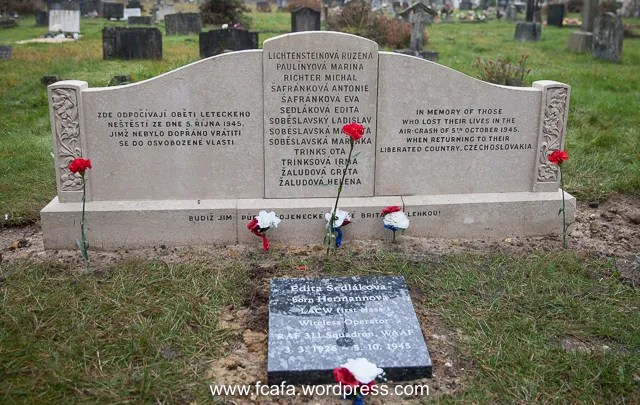
On 1 November 2015, a memorial plaque by the communal grave, for Edita Sedláčová, was unveiled. .
Dne 1. listopadu 2015. byla odhalena pamětní deska společného hrobu také pro Editu Sedlákovou.

_______________________________________________________________
In the Autumn of 2009, following research into the crash by aviation archaeologist Colin Lee, permission was obtained from the landowners for the Kudláček brothers to visit the site of their father’s crash.
Na podzim roku 2009, po výzkumných pracích leteckého archeologa Colina Lee na místě havárie, bylo získáno povolení pro bratry Kudláčkovy, aby mohli navštívit místo, kde jejich otec zahynul.

2009, Barry and Eldon Kudláček at the crash site of their father.
Rok 2009, bratři Barry a Eldon Kudláčkovi na místě havárie letounu jejich otce.
Despite the crash site having being cleared after the accident, some sixty three years earlier, the three still found some crash remains on the ground.
Navzdory tomu, že místo havárie bylo vyčištěno, i po zhruba 63 letech je možné nalézt na zemi nějaké pozůstatky této tragedie.

A piece of the windscreen perspex found at the crash site 2009.
Kousek čelního plexiskla byl nalezen na místě havárie ještě v roce 2009
Article last updated 19 November 2017

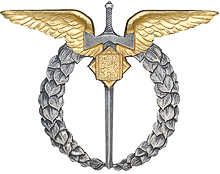




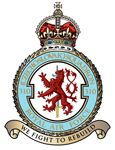
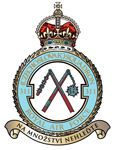
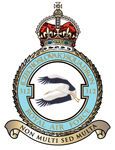
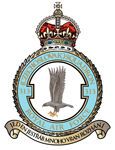


I come to this page by accident.
In 2005 my wife and I lived near the runway at Blackbush airfield when we visited Prague.
We visited St. Vitus Cathedral and the castle overlooking the city where there is a chapel dedicated to the Czechoslovakians who lost their lives whilst serving with the RAF during WWII.
I was surprised to see that the Book of Remembrance was open at a page where the first entry read ‘Antonin Broz 5.10.45 Blackbush’.
It seemed a strange coincidence and I took a picture of the page and did some research to establish the facts.
I have visited Antonin’s grave and those of the others at Brookwood on several occasions since to pay my respects
Much later I became responsible for social media for the Basingstoke Canal Society. As the canal passes close to the crash site I did an article on Facebook about the crash.
David Grundy who is mentioned in the comments above was in touch recently via Facebook having seen the article. Antonin was his Grandfather.
I have often wondered at the coincidence of our visit to Prague that day. Was there something about the story that had been missed and needed to be found? Or was it a story that was just not meant to go away?
I have included a link to the Facebook article that has a picture of the Book of Remembrance taken on the day of the visit and pictures of their graves at Brookwood.
I hope the Facebook article does them justice.
You can get in touch via Facebook if you need to.
Ian Sims
I am the very proud grand daughter of Bohumil Vaverka. Would like to keep the heroic memories alive …..
I have a group photograph of your grandfather.
If you contact me via this website I will send it to you.
Regards
Mike
Hi Mike,
As always I find myself reading about my grandfather, Bohumil Vaverka, and just saw your reply to an old post of mine. My mother, who was only two when he died, just underwent surgery & it made me feel like another link to him was being made more fragile.. Thankfully she’s on the mend.
I have sent photos to Pavel Vancata who, i believe, is compiling a biography of sorts of sqdn 311.
Obviously we have photos, group & personal but i would love to see any you may have.
May i ask what your connection is to the group & where you are as nowadays people are so spread out throughout the world.
Many thanks in advance, Chesca.
Hello Chesca
My Aunt was Edita Sedlakova killed on 5th October 1945 at Blackbushe.
I am in Northamptonshire, UK
If you contact via this website I can send you what I have.
I have met Pavel in Prague – a very pleasant and talented man
Regards
Mike
Hi,
My name is David Grundy and Antonin Broz was my grandfather.
Thank you so much for sharing this article. For me it had filled in a lot of the gaps that surrounded his death, and the circumstances that led to his death.
Antonin was survived his wife, Nancy, who is still alive and his daughter, who was 1 at the time of his death.
My grandmother, an English national, briefly lived in Trebechovice, in the CR, but returned to the UK and has lived in the Midlands ever since.
Discussions, around my grandfathers death, are still emotive subjects
Thank you again. David
Hello David,
In researching my family through Ancestry.co.uk I have only this week discovered info on Antonin. If I have got correct info Nancy(nee Hodson) is my cousin, her mother Frances
(nee Johnson) was my father’s sister.
I would be most grateful if you could confirm or otherwise.
Best wishes
Alan
David …. and anybody else reading this ….. I have placed a page on the internet in which I try to make sure this tragedy is not forgotten .
https://www.findagrave.com/memorial/175817048/elvetham_air_disaster-5th_october_1945-memorial
I was so pleased for you Barry when you finally got to find and visit the crash site where your Father and his crew were killed. It must bring some sort of closure to an incident that you have had to grow up with for many years. Now together with this article they can take their place in the long line of tributes we pay to all those who lost their young lives in defence of Mother England and in your Father’s case their homeland……Czechoslovakia ……..this Country owes so very much to those from Europe and our Commonwealth as well as America…..who put their young lives on the line for us and humanity………
its the first time that i have took in the enormity of what happened
My name is Jitka Brynjolffssen, (Žaludová). Greta Žaludová was my father’s first wife. Like in the comment above, thank you for publishing this article, which gives such good account what had happened on the tragic day.
I have visited Brookwood cemetery and paid respect to the dead few times now since the help from http://forum.valka.cz in 2008 to locate the graves.
Tragic story. RIP
Thank you very much for publishing this.
I am sure it is the most detailed and accurate record that has ever been made of this tragedy
I am the nephew of Edith Sedlakova (Hermannova).
Edith did not get the benefit of a military grave but, with assistance, an application has been made for Edith’s wartime services as a WAAF to be recognised.
I am pleased that I was able to help in a very small way with this project.
Michael Hermann
My name is Lynda Catherine Vlasta Vaverka, daughter of F/O Bohumil Vaverka 311 sqd.
This article is the first version of the tragic accident which I have seen, there has always been alot of mystery surrounding the event and nothing has ever been clear.
Hi Lynda, I remember you speaking about this when we were at school. So glad you finally have some answers. Shane